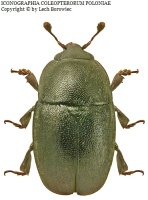Підтримуємо Вільну Україну
 We Support Free Ukraine
We Support Free Ukraine

Biodiversity Map
Taxa

-
Arthropodaphylum
Click to switch
to select orders
and filters > -
Hexapodasubphylum
Click to switch
to select orders
and filters > -
Insectaclass
Click to switch
to select orders
and filters > -
Coleopteraorder
Click to set
as the main taxon
and as a base
← of the left panel > -
Polyphagasuborder
Click to set
as the main taxon
and as a base
← of the left panel > -
Cucujiformiaseries
Click to set
as the main taxon
and as a base
← of the left panel > -
Cucujoideasuperfamily
Click to set
as the main taxon
and as a base
← of the left panel > -
Nitidulidaefamily
Click to set
as the main taxon
and as a base
← of the left panel > -
Meligethinaesubfamily
Click to set
as the main taxon
and as a base
← of the left panel > -
Meligethesgenus
Click to set
as the main taxon
and as a base
← of the left panel >
species:
Meligethes lugubris
PL
YES
name status: valid name
BioMap ID: 1018088
taxon code: 3250
taxonomy checked: YES
Data on distribution in Poland

Statistics
- Records: 117
- Publications: 41
- Collections: 9
- Publication authors: 42
- Illustrations (iconography): 1
- Photos (specimen/observation): lacking
Taxon description
Rozsiedlenie tego gatunku obejmuje południową i środkową Europę, ku północy sięgając po środkową Szwecję, południową Finlandię oraz Karelię, notowany też z Kaukazu. W Polsce rzadko i sporadycznie spotykany wykazywany z nielicznych stanowisk w zachodniej i południowej części kraju. Występuje przeważnie na suchych, zwłaszcza piaszczystych i wapiennych zboczach, gdzie najczęściej spotykany na macierzance piaskowej – Thymus serpyllum L., która jest również rośliną żywicielską dla larw. Postacie dojrzałe spotykano poza tym na kwiatach innych roślin, jak świerzbnica polna — Knautia arvensis (L.) Coult., poziomka pospolita — Fragaria vesca L. i mięta — Mentha L.
Illustrations
... browse
 Meligethes
Meligetheslugubris
External data sources
- Ostatnie rekordy
-
774659
 ⊡
⊡ Nitidulidae: Meligethes lugubris, PL, Roztocze, Biała Góra, UTM FA79, 1982, leg. L. Borowiec, coll. Uniw. Wrocławski, ZBiTE
Nitidulidae: Meligethes lugubris, PL, Roztocze, Biała Góra, UTM FA79, 1982, leg. L. Borowiec, coll. Uniw. Wrocławski, ZBiTE -
774658
 ⊡
⊡ Nitidulidae: Meligethes lugubris, PL, Dolny Śląsk, rez. Zimna Woda, UTM WS78, 1982, leg. L. Borowiec, coll. Uniw. Wrocławski, ZBiTE
Nitidulidae: Meligethes lugubris, PL, Dolny Śląsk, rez. Zimna Woda, UTM WS78, 1982, leg. L. Borowiec, coll. Uniw. Wrocławski, ZBiTE -
737534
 ×
× Nitidulidae: Meligethes lugubris, PL (Lasoń 2003(2002))
Nitidulidae: Meligethes lugubris, PL (Lasoń 2003(2002)) -
737507
 ×
× Nitidulidae: Meligethes lugubris, PL (Lasoń 1999(1998)a)
Nitidulidae: Meligethes lugubris, PL (Lasoń 1999(1998)a) -
719222
 ×
× Nitidulidae: Meligethes lugubris, PL, coll. IOR
Nitidulidae: Meligethes lugubris, PL, coll. IOR -
494720
 ⊡
⊡ Nitidulidae: Meligethes lugubris, PL, Nizina Mazowiecka, Stefanów, UTM EC15 (Błażejewski 1962)
Nitidulidae: Meligethes lugubris, PL, Nizina Mazowiecka, Stefanów, UTM EC15 (Błażejewski 1962) -
494719
 ⊡
⊡ Nitidulidae: Meligethes lugubris, PL, Nizina Mazowiecka, rez. Chojnów nature reserve, UTM EC06 (Błażejewski 1962)
Nitidulidae: Meligethes lugubris, PL, Nizina Mazowiecka, rez. Chojnów nature reserve, UTM EC06 (Błażejewski 1962) -
494718
 ⊡
⊡ Nitidulidae: Meligethes lugubris, PL, Nizina Mazowiecka, Warszawa, Warszawa – Wygoda, UTM EC18 (Osterloff 1885)
Nitidulidae: Meligethes lugubris, PL, Nizina Mazowiecka, Warszawa, Warszawa – Wygoda, UTM EC18 (Osterloff 1885) -
494717
 ⊡
⊡ Nitidulidae: Meligethes lugubris, PL, Nizina Mazowiecka, Twierdza Modlin, UTM DD70, 2001, leg. D. Kubisz, coll. ISEZ PAN (Lasoń et al. 2011)
Nitidulidae: Meligethes lugubris, PL, Nizina Mazowiecka, Twierdza Modlin, UTM DD70, 2001, leg. D. Kubisz, coll. ISEZ PAN (Lasoń et al. 2011) -
480230
 ×
× Nitidulidae: Meligethes lugubris, PL, coll. ISEZ PAN
Nitidulidae: Meligethes lugubris, PL, coll. ISEZ PAN - ... more
- Powiązane publikacje
-
Lasoń A., Marczak D., Kubisz D., Tykarski P. 2011. Kateretidae and Nitidulidae (Coleoptera) of the Mazovian Lowland. Pol. Pismo Ent., 80(2):299-320.
 full text
full text Show records
Show records -
Gutowski J.M., Kubisz D., Sućko K., Zub K. 2010b. Sukcesja saproksylicznych chrząszczy (Coleoptera) na powierzchniach pohuraganowych w drzewostanach sosnowych Puszczy Piskiej. Leś. Pr. Bad., 71:279-298.
 Show records
Show records -
Audisio , Cline , De Biase , Antonini , Mancini 2009b. Preliminary re-examination of genus-level taxonomy of the pollen beetle subfamily Meligethinae (Coleoptera: Nitidulidae). Acta Ent. Mus. Nat. Pragae, 49(2):341-504.
 Show records
Show records -
Lasoń 2007. A contribution to the knowledge of the sap beetles of Turkey (Coleoptera: Nitidulidae and Kateretidae). Ann. Upper Siles. Mus., Ent., 14-15:195-221.
 Show records
Show records -
Lasoń A. 2003(2002). Meligethes jelineki Audisio, 1976 – nowy dla fauny Polski gatunek chrząszcza oraz nowe dane o rozsiedleniu przedstawicieli rodziny Nitidulidae (Coleoptera) na Podlasiu. Wiad. Entomol., 21(4):205-212.
 full text
full text Show records
Show records - ... more




